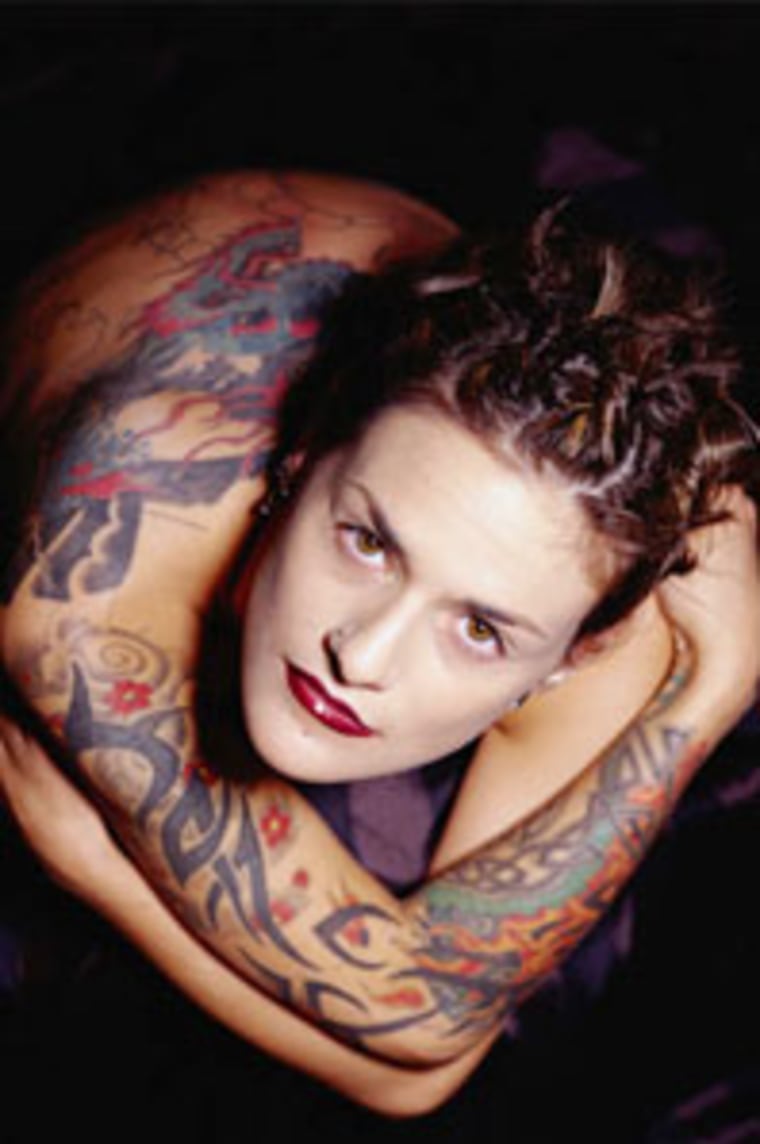It was a typical family vacation in Honolulu. Kathryn visited many of the usual attractions: Waikiki Beach, Pearl Harbor, Diamond Head ... and a tattoo shop. On a lark while sightseeing, she and her two female companions walked in.
They each walked out with small designs — in Kathryn’s case, a rose, to symbolize her hometown of Portland, Ore. — permanently imprinted on their right ankles, discreetly placed to not draw attention, but to easily show off to friends without making them blush.
Many would argue there are better ways to immortalize a vacation than getting a tattoo, but stories like Kathryn’s are becoming more and more common. Today, it seems people of every persuasion are doing it. Case in point: At the time of her vacation, Kathryn was 75.
“When I got back home,” she says with a laugh, “everybody at my retirement complex thought it was absolutely fantastic! Except for one person; she thought it was just horrible.”
So the next time you talk to grandma on the phone, ask her if she’s been to the parlor lately — the tattoo parlor.
Going mainstream?
Body art is no longer the domain of bikers, sailors and inmates. A 2003 online survey by Harris Interactive found that 16 percent of all U.S. adults have at least one tattoo. The age group with the highest number of tattooed adults is 25-29 year-olds (36 percent), followed by 30-39 year olds (28 percent). Seven percent of tattoo owners are 65 and older. The poll also found that equal numbers of males and females have received tattoos.
If you think tattoos are a recent phenomenon, needle this: Many unearthed Egyptian mummies have shown evidence of body art, and it’s likely that the practice originated much earlier. The word “tattoo” entered the English vernacular some time around 1785, when Captain Cook observed in his journal that Tahitians engaged in the art of tattau (“to mark”).
For various reasons over the years, tattoos became taboo in Western cultures — but this is rapidly changing. From Dennis Rodman to David Beckham, from the Dixie Chicks to Cher, from 50 Cent to Eminem, athletes, celebrities and others in the media have brought tattoos into the limelight. Today tattoos are considered by aficionados as “art,” not skin graffiti.
Coming of age
If tattoos are becoming more mainstream, the tattoo industry is growing up as well. There now exists a National Tattoo Association (with annual conventions), as well as an Alliance of Professional Tattooists (APT), whose primary mission is to educate shop owners on critical health and safety issues.
No one knows for certain how many adults had tattoos 10 or even 20 years ago, but Dennis Dwyer, a director at the Tucson, Ariz.-based APT, says the industry has grown sharply in the last decade. Today his organization has around 3,000 members. Five years ago, it was around 1,800.
“We’re still seeing more and more people getting tattoos,” notes Dwyer, “but interestingly, the industry is reaching a saturation point; there are so many shops out there now that it may not be as lucrative for the average tattooist as it once was.” Dwyer also notes that a lot of business is being lost to so-called underground tattooists — amateur “artists” who tattoo friends and family members for free or for cash on the side with little regard for industry standards.
But not all shops are in a rut. According to the Harris poll, the Western United States has more tattooed adults than any other region in the country. And that makes sense to shop owner Karen Roze of Sacred Rose Tattoo in San Francisco’s Mission District. These days, she says, business is booming.
Parlor gone boutique?
Ask anyone to describe a typical tattoo shop and you may hear words like “seedy,” “dirty,” “macho.” Roze, 37, is out to change that perception by mixing her art with friendliness and customer service. In San Francisco, a hotbed of tattoo artists and tattoo seekers, competition can be fierce.
“We train our artists to treat each customer as if their tattoo was the most important thing to them,” says Roze, who opened her shop in 1998 after apprenticing for about six years elsewhere. Roze shies away from any salon-type comparisons, but she insists her shop’s open layout (no booths) and clean, old-fashioned atmosphere create a very professional and creative environment.
You’d expect nothing less from a fine-arts graduate. In fact, each artist in Roze’s shop is schooled in the arts. Roze says the high-quality designs they come up with draw clients in the door more than once. “People come in for a tattoo, they like what they get and how they’re treated, and come back for more. I’m even tattooing children of parents that I tattooed years earlier.”
What surprises Roze most in recent years is how many of her clients are senior citizens. “I have a theory,” she says, “that the older you get, the less you care about what others think. Plus you have more disposable income. A good tattoo isn’t cheap.”
The Harris poll revealed another telling statistic: 34 percent of tattooed adults feel sexier than before getting their body art. Roze concurs. “The fake tattoos were always the coolest prize in the Cracker Jack box. Now people don’t have to worry about getting the real thing. The sexy appeal of body art never goes away.”
Kristopher Kaiyala is a freelance writer based in Washington state.
